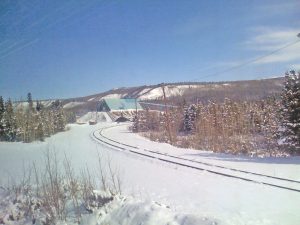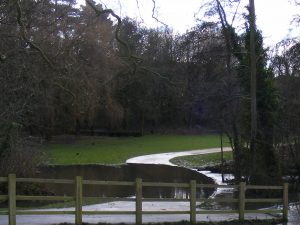Recently the U.S. Court of Appeals for the Fifth Circuit issued an important decision regarding the Clean Air Act (CAA) and the interactions between EPA and the states. On July 15, Fifth Circuit, in a unanimous ruling, granted a stay of the U.S. Environmental Protection Agency’s (EPA) Final Rule promulgated in 2016 (81 Fed. Reg. 296 (Jan. 5, 2016)). The Final Rule partially approved and partially disapproved the regional haze plans developed and submitted to EPA as a state implementation plan (SIP) by Texas and Oklahoma and replaced the disapproved SIP provisions with a Federal Implementation Plan. The EPA promulgated the Final Rule nearly seven years after Texas submitted its SIP and nearly six years after Oklahoma submitted its SIP. This decision, written by Judge Elrod, is a long and complex journey through the CAA, and is quite critical of EPA handling of these issues. The case is State of Texas, et al. v. EPA.
Articles Posted in Environmental
House Wants to Weigh in on Definition of “Solid Waste”
Bi-partisan legislation has been introduced in the House of Representatives (H.R. 5685), known as the  “Farm Regulatory Certainty Act,” a bill that would amend Resource Conservation and Recovery Act’s (RCRA) definition of “solid waste” (42 U.S.C. § 6903 (27)) to exclude “animal waste, manure, fertilizer, or constituents derived from such sources.” A recent U.S. District Court ruling in Washington State, Community Association for the Restoration of the Environment v. Cow Palace, LLC, held that manure qualifies as a solid waste under RCRA, triggering RCRA’s imminent hazard provisions. The Cow Palace decision alarmed members of the agricultural community. The proposed legislation states that Congress never intended RCRA to govern such waste. The legislation would also amend RCRA’s Citizen Suit provisions to explicitly exclude diligent enforcement actions, whether administrative or judicial, taken by state and federal officials. It appears that alleged violations of approved State Plans approved under RCRA Section 4007 would also be excluded.
“Farm Regulatory Certainty Act,” a bill that would amend Resource Conservation and Recovery Act’s (RCRA) definition of “solid waste” (42 U.S.C. § 6903 (27)) to exclude “animal waste, manure, fertilizer, or constituents derived from such sources.” A recent U.S. District Court ruling in Washington State, Community Association for the Restoration of the Environment v. Cow Palace, LLC, held that manure qualifies as a solid waste under RCRA, triggering RCRA’s imminent hazard provisions. The Cow Palace decision alarmed members of the agricultural community. The proposed legislation states that Congress never intended RCRA to govern such waste. The legislation would also amend RCRA’s Citizen Suit provisions to explicitly exclude diligent enforcement actions, whether administrative or judicial, taken by state and federal officials. It appears that alleged violations of approved State Plans approved under RCRA Section 4007 would also be excluded.
Court Holds that Stale Permits May Automatically Terminate if Permitting Laws are Not Faithfully Followed
On July 7, the U.S. District Court for Alaska decided the case of Castle Mountain Coalition, et al., v. Office of Surface Mining Reclamation and Enforcement,  holding that a mining permit issued under the Surface Mining Control and Reclamation Act (SMCRA) is terminated by operation of law if the mining activities authorized by the permit have not commenced within three years of the date of issuance, unless an authorized extension has been granted pursuant to the SMCRA. In this case, since no extension was granted after the first extension, the Court concluded that mining operations on the Wishbone Hill Coal Project that finally commenced many years later are not permitted. In so ruling, the Court rejected the argument of Office of Surface Mining Reclamation and Enforcement (OSM), an agency of the Department of the Interior, that SMCRA does not require the permit to be terminated if no special termination proceedings have been initiated, and vacated the OSM determination.
holding that a mining permit issued under the Surface Mining Control and Reclamation Act (SMCRA) is terminated by operation of law if the mining activities authorized by the permit have not commenced within three years of the date of issuance, unless an authorized extension has been granted pursuant to the SMCRA. In this case, since no extension was granted after the first extension, the Court concluded that mining operations on the Wishbone Hill Coal Project that finally commenced many years later are not permitted. In so ruling, the Court rejected the argument of Office of Surface Mining Reclamation and Enforcement (OSM), an agency of the Department of the Interior, that SMCRA does not require the permit to be terminated if no special termination proceedings have been initiated, and vacated the OSM determination.
Illinois Opens Door for Takings Claims Flowing From Temporary Flooding
On July 8, the Illinois Supreme Court, in Hampton, et al., v. Metropolitan Water Reclamation District of Greater Chicago,  held that temporary flooding of the plaintiffs’ residential properties located in the Chicago area can be the subject of a “taking” for which they may be entitled to just compensation under the Illinois Constitution. Following very heavy rains in July 2010, the Metropolitan Water Reclamation District of Greater Chicago allegedly diverted storm water to nearby creeks and took other actions which exacerbated local flooding conditions. The lower court, relying on Illinois case law, held that Illinois does not recognize a takings claim based on temporary flooding. However, the plaintiffs argued that the United States Supreme Court’s 2012 decision in Arkansas Game and Fish Commission v. United States, which held that temporary flooding can constitute a “taking” under the federal constitution must be acknowledged.
held that temporary flooding of the plaintiffs’ residential properties located in the Chicago area can be the subject of a “taking” for which they may be entitled to just compensation under the Illinois Constitution. Following very heavy rains in July 2010, the Metropolitan Water Reclamation District of Greater Chicago allegedly diverted storm water to nearby creeks and took other actions which exacerbated local flooding conditions. The lower court, relying on Illinois case law, held that Illinois does not recognize a takings claim based on temporary flooding. However, the plaintiffs argued that the United States Supreme Court’s 2012 decision in Arkansas Game and Fish Commission v. United States, which held that temporary flooding can constitute a “taking” under the federal constitution must be acknowledged.
DeMuth’s Perspective on Administrative Law
The issue of the relentless growth and penetration of administrative law remains a compelling topic for those operating in heavily regulated industries like the construction industry. Chris DeMuth, a Fellow at the Hudson Institute, recently wrote Can the Administrative State be Tamed?, an interesting essay in which Demuth provides his perspective on this topic. The administrative state has continued its inexorable growth regardless of whether the President is a Democrat or a Republican. Demuth’s essay was recently published in the Journal of Legal Analysis. It does not address last year’s King v. Burwell decision of the U.S. Supreme Court, which held that some legislation is too fundamentally important to give an agency “Chevron Deference” when it interprets the law it is implementing, but it does mention a Department of Agriculture regulation requiring magicians using rabbits in their acts to prepare and submit to the appropriate authorities a disaster response and contingency plan.
Additional Source: Complexities of Administrative State Lead to Win for Regulated Community
Bureau to Take Closer Look at Offshore Wind Project
 On July 5, the U.S. Court of Appeals for the DC Circuit, in Public Employees for Environmental Responsibility v. Hopper, Acting Director of the U.S. Bureau of Ocean Energy Management, reviewed the District Court’s dismissal of a lawsuit alleging that the Government’s approval of a Cape Cod offshore wind energy project violated several environmental statutes. The Court of Appeals held that the National Environmental Policy Act (NEPA) finding made by the primary permitting agency, the U.S. Bureau of Ocean Energy Management (Bureau), did not take a sufficiently “hard look” at the proffered geophysical evidence, and that an Endangered Species Act (ESA) “incidental take” determination must be set aside because the U.S. Fish and Wildlife Service should have considered the submissions of the plaintiffs. Otherwise, the Court of Appeals was satisfied with the project’s compliance with the other permitting and development requirements. The Court of Appeals notes that “[o]ffshore energy providers like Cape Wind must comply with a slew of federal statutes designed to protect the environment, promote public safety, and preserve historic and archeological resources on the outer continental shelf.”
On July 5, the U.S. Court of Appeals for the DC Circuit, in Public Employees for Environmental Responsibility v. Hopper, Acting Director of the U.S. Bureau of Ocean Energy Management, reviewed the District Court’s dismissal of a lawsuit alleging that the Government’s approval of a Cape Cod offshore wind energy project violated several environmental statutes. The Court of Appeals held that the National Environmental Policy Act (NEPA) finding made by the primary permitting agency, the U.S. Bureau of Ocean Energy Management (Bureau), did not take a sufficiently “hard look” at the proffered geophysical evidence, and that an Endangered Species Act (ESA) “incidental take” determination must be set aside because the U.S. Fish and Wildlife Service should have considered the submissions of the plaintiffs. Otherwise, the Court of Appeals was satisfied with the project’s compliance with the other permitting and development requirements. The Court of Appeals notes that “[o]ffshore energy providers like Cape Wind must comply with a slew of federal statutes designed to protect the environment, promote public safety, and preserve historic and archeological resources on the outer continental shelf.”
Controversial “Climate Change” Video Results in Significant FOIA Decision by DC Circuit
On July 5, the U.S. Court of Appeals for the District of Columbia Circuit issued an important ruling interpreting the reach of the federal Freedom of Information Act (FOIA) in the case of Competitive Enterprise Institute v. Office of Science and Technology Policy. The Office is located in the Executive Branch, and it has been engaged in a long-running dispute with the Competitive Enterprise Institute (CEI) with respect to a short, two-minute video released by the Director of the Office, John Holdren. In the instant action, the Court of Appeals reviewed the CEI’s attempts to obtain the records of the Director found in emails sent to or from the Director’s private, non-governmental email account.
the federal Freedom of Information Act (FOIA) in the case of Competitive Enterprise Institute v. Office of Science and Technology Policy. The Office is located in the Executive Branch, and it has been engaged in a long-running dispute with the Competitive Enterprise Institute (CEI) with respect to a short, two-minute video released by the Director of the Office, John Holdren. In the instant action, the Court of Appeals reviewed the CEI’s attempts to obtain the records of the Director found in emails sent to or from the Director’s private, non-governmental email account.
Princesses Everywhere Embrace Recent Decision, Private Land Owners Not So Much
This decision is reminiscent of a fairytale about a princess and her frog prince and the croaking chorus of the Frogs of Aristophane.  On June 30, the U.S. Court of Appeals for the Fifth Circuit issued a significant ruling involving critical habitat designations on private land. The case was decided on a 2 to 1 vote, with Judge Owen providing a strong dissent. The majority was at pains to state that “critical habitat designations do not transform private land into wildlife refuges.” Nevertheless, the extension of the Endangered Species Act (ESA) to this private land may conceivably have federal permitting consequences later if the future development of the land triggers Clean water Act considerations.
On June 30, the U.S. Court of Appeals for the Fifth Circuit issued a significant ruling involving critical habitat designations on private land. The case was decided on a 2 to 1 vote, with Judge Owen providing a strong dissent. The majority was at pains to state that “critical habitat designations do not transform private land into wildlife refuges.” Nevertheless, the extension of the Endangered Species Act (ESA) to this private land may conceivably have federal permitting consequences later if the future development of the land triggers Clean water Act considerations.
DC Circuit Denies Petitions to Review Non-Export-Related Environmental Consequences of FERC Action
Two recently issued decisions are important because they clarify how the formidably complex legal structure affecting a growing American business—the export of liquefied natural gas (LNG) –will be interpreted by the one federal Court of Appeals that has singular expertise in interpreting such requirements. On June 28, the U.S. Court of Appeals for the DC Circuit denied two petitions to review National Environmental Policy Act (NEPA) environmental issues affecting two separate FERC LNG export terminal facilities; the two cases are Sierra Club and Galveston Baykeeper v. FERC ( pertaining to the Freeport, Texas terminal ) and Sierra Club v. FERC (regarding the Sabine Pass Terminal). These cases were argued by and decided by the same attorneys and panel of judges. The Court of Appeals found that the petitioners had demonstrated sufficient standing, but the basic flaw in their argument seems to have been that FERC’s role is fairly circumscribed by law, and the major complaint was that the export of LNG would inevitable reduce the supply of natural gas for domestic purposes, thus increasing reliance on cheaper sources of energy such as coal.
DC Court: EEOC Guidance Final Action Subject to Review in Federal Court
A recent decision by the U.S. Court of Appeals for the Fifth Circuit is a reminder to important federal agencies that they must take care to adhere to the requirements of the Administrative Procedure Act (APA) when they issue not only new rules, but also other regulatory documents as well, and that the federal courts can, in appropriate cases, step into a controversy at an early stage. On June 27, the Fifth Circuit ruled, in a 2 to 1 opinion, that a 2012 Equal Employment Opportunity Commission (EEOC) Enforcement Guidance, entitled “Enforcement Guidance on the Consideration of Arrest and Conviction Record in Employment Decisions Under Title VII of the Civil Rights Act of 1964” was a final action, and the lower court erred in dismissing a declaratory judgment action filed by the State of Texas. The case is State of Texas v. Equal Opportunity Commission.
 Gravel2Gavel Construction & Real Estate Law Blog
Gravel2Gavel Construction & Real Estate Law Blog


